Matias Tassano
Provably Convergent Plug & Play Linearized ADMM, applied to Deblurring Spatially Varying Kernels
Oct 19, 2022
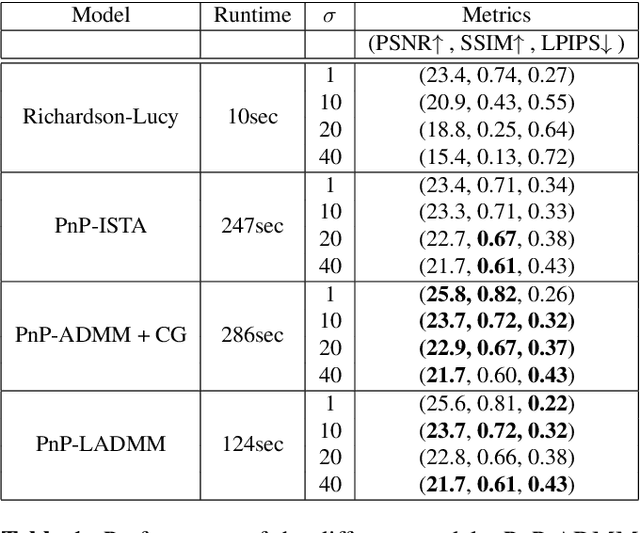

Abstract:Plug & Play methods combine proximal algorithms with denoiser priors to solve inverse problems. These methods rely on the computability of the proximal operator of the data fidelity term. In this paper, we propose a Plug & Play framework based on linearized ADMM that allows us to bypass the computation of intractable proximal operators. We demonstrate the convergence of the algorithm and provide results on restoration tasks such as super-resolution and deblurring with non-uniform blur.
Video Restoration with a Deep Plug-and-Play Prior
Sep 15, 2022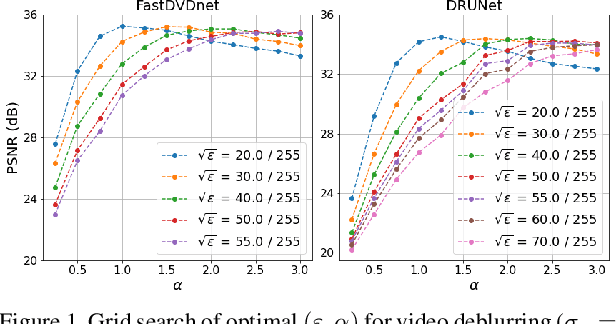
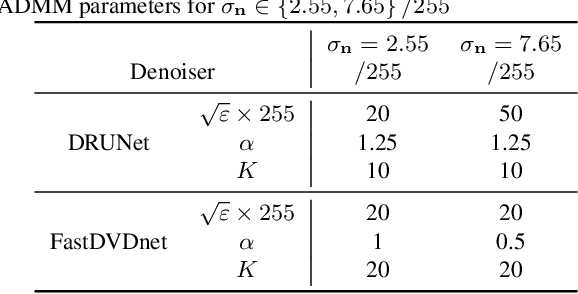
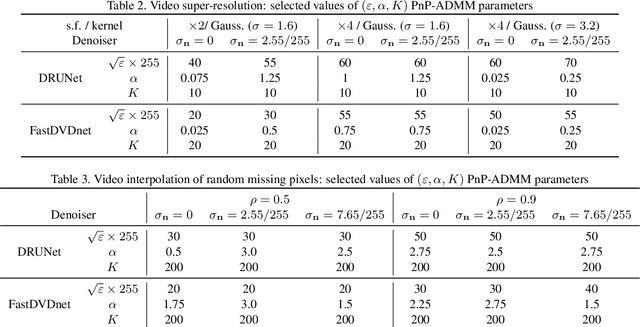
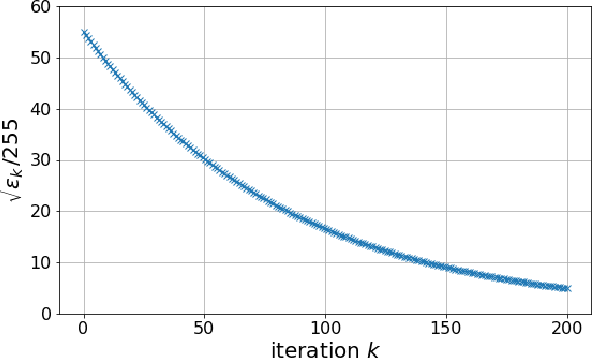
Abstract:This paper presents a novel method for restoring digital videos via a Deep Plug-and-Play (PnP) approach. Under a Bayesian formalism, the method consists in using a deep convolutional denoising network in place of the proximal operator of the prior in an alternating optimization scheme. We distinguish ourselves from prior PnP work by directly applying that method to restore a digital video from a degraded video observation. This way, a network trained once for denoising can be repurposed for other video restoration tasks. Our experiments in video deblurring, super-resolution, and interpolation of random missing pixels all show a clear benefit to using a network specifically designed for video denoising, as it yields better restoration performance and better temporal stability than a single image network with similar denoising performance using the same PnP formulation. Moreover, our method compares favorably to applying a different state-of-the-art PnP scheme separately on each frame of the sequence. This opens new perspectives in the field of video restoration.
Deep Model-Based Super-Resolution with Non-uniform Blur
Apr 21, 2022


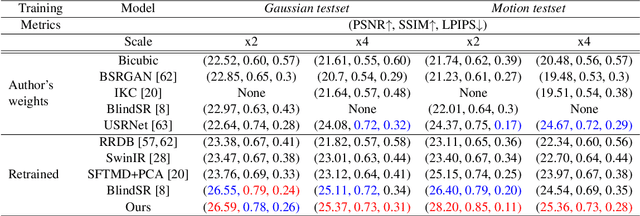
Abstract:We propose a state-of-the-art method for super-resolution with non-uniform blur. Single-image super-resolution methods seek to restore a high-resolution image from blurred, subsampled, and noisy measurements. Despite their impressive performance, existing techniques usually assume a uniform blur kernel. Hence, these techniques do not generalize well to the more general case of non-uniform blur. Instead, in this paper, we address the more realistic and computationally challenging case of spatially-varying blur. To this end, we first propose a fast deep plug-and-play algorithm, based on linearized ADMM splitting techniques, which can solve the super-resolution problem with spatially-varying blur. Second, we unfold our iterative algorithm into a single network and train it end-to-end. In this way, we overcome the intricacy of manually tuning the parameters involved in the optimization scheme. Our algorithm presents remarkable performance and generalizes well after a single training to a large family of spatially-varying blur kernels, noise levels and scale factors.
FastDVDnet: Towards Real-Time Video Denoising Without Explicit Motion Estimation
Jul 01, 2019



Abstract:In this paper, we propose a state-of-the-art video denoising algorithm based on a convolutional neural network architecture. Until recently, video denoising with neural networks had been a largely under explored domain, and existing methods could not compete with the performance of the best patch-based methods. The approach we introduce in this paper, called FastDVDnet, shows similar or better performance than other state-of-the-art competitors with significantly lower computing times. In contrast to other existing neural network denoisers, our algorithm exhibits several desirable properties such as fast runtimes, and the ability to handle a wide range of noise levels with a single network model. The characteristics of its architecture make it possible to avoid using a costly motion compensation stage while achieving excellent performance. The combination between its denoising performance and lower computational load makes this algorithm attractive for practical denoising applications. We compare our method with different state-of-art algorithms, both visually and with respect to objective quality metrics.
DVDnet: A Fast Network for Deep Video Denoising
Jun 04, 2019



Abstract:In this paper, we propose a state-of-the-art video denoising algorithm based on a convolutional neural network architecture. Previous neural network based approaches to video denoising have been unsuccessful as their performance cannot compete with the performance of patch-based methods. However, our approach outperforms other patch-based competitors with significantly lower computing times. In contrast to other existing neural network denoisers, our algorithm exhibits several desirable properties such as a small memory footprint, and the ability to handle a wide range of noise levels with a single network model. The combination between its denoising performance and lower computational load makes this algorithm attractive for practical denoising applications. We compare our method with different state-of-art algorithms, both visually and with respect to objective quality metrics. The experiments show that our algorithm compares favorably to other state-of-art methods. Video examples, code and models are publicly available at \url{https://github.com/m-tassano/dvdnet}.
 Add to Chrome
Add to Chrome Add to Firefox
Add to Firefox Add to Edge
Add to Edge